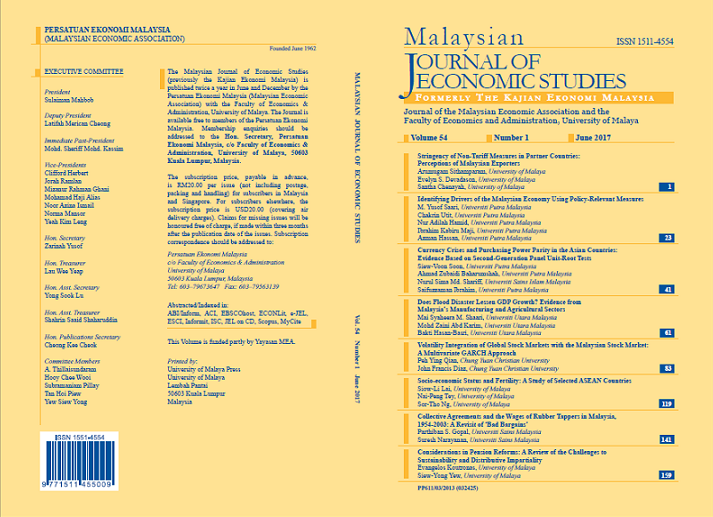Currency Crises and Purchasing Power Parity in the Asian Countries: Evidence Based on Second-Generation Panel Unit-Root Tests
DOI:
https://doi.org/10.22452/MJES.vol54no1.3Keywords:
Asian, cross-sectional dependency, real exchange rate, second-generation modelsAbstract
This study applies a second-generation panel unit-root tests to determine the stochastic properties of real exchange rates for 14 Asian countries. Based on three popular alternative definitions of a currency crisis, we identify the several important currency crisis episodes in the region. The purchasing power parity (PPP) hypothesis was overwhelmingly supported after accommodating these heterogeneous noisy and unstable observations. Our panel unit-root test that controls for cross-sectional dependence and is robust to structural breaks confirms that the crisis in all the countries fits well with the second-generation models of currency crisis, that is, the root cause of the currency crises may not lie in economic fundamentals. PPP relation emerges when breaks and cross country dependency has been taken into account for these 14 countries.

